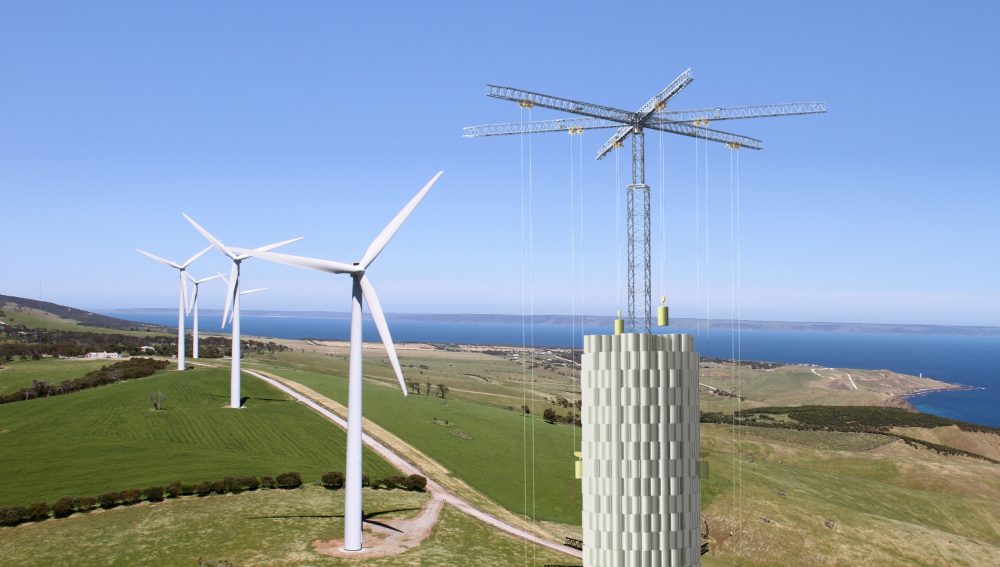
Over the last decade, the renewable energy industry has boomed due to the proliferation of new technology that is reducing the cost of construction and long-term operability. However, one critical problem still remains: storing renewable energy during lulls in wind speed or sun exposure is often prohibitively expensive. In response to this issue, Energy Vault, a subsidiary of California’s IdeaLab, has recently announced a straightforward mechanism for the conservation of renewable sources using kinetic forces.
The mechanism proposed by Energy Vault is a nearly 400-foot tall, six-armed steel crane. Using proprietary software, the towering structure orchestrates the placement of 35-ton blocks of concrete in response to drop-offs in demand and fluctuations in environmental conditions.
How does it work? As power demand decreases, the cranes surround themselves with concentric rings of the concrete bricks lifted by the leftover power from surrounding wind and solar farms. Once demand increases, the cranes begin lowering the bricks, which powers turbines that transform the kinetic energy into electricity that gets pumped back into the grid.
Energy Vault’s team looked toward preexisting renewable energy sources that rely on gravitational forces. According to Energy Vault, the technology was influenced by energy retention strategies of hydroelectric power dams that pump water into a series of cisterns on higher ground that ultimately flow downwards into energy turbines once demand rises.

Unlike conventional resources used for the retention of renewable energy, such as Tesla’s Powerwall and Powerpack lithium-ion stationary batteries, the system developed by Energy Vault does not rely on chemical storage solutions or high-cost materials. Recycled debris from preexisting construction sites can be used for the fabrication of the bricks, which are viable for up to four decades without a decrease in storage capacity.
Currently, Energy Vault is partnering with India’s Tata Power Company Limited to construct an initial 35 MWh system with an expected date of completion in 2019.
